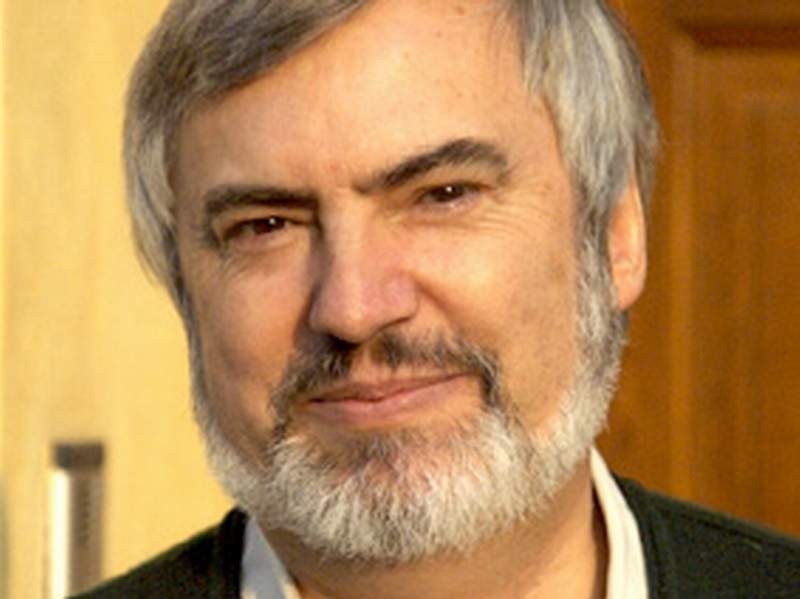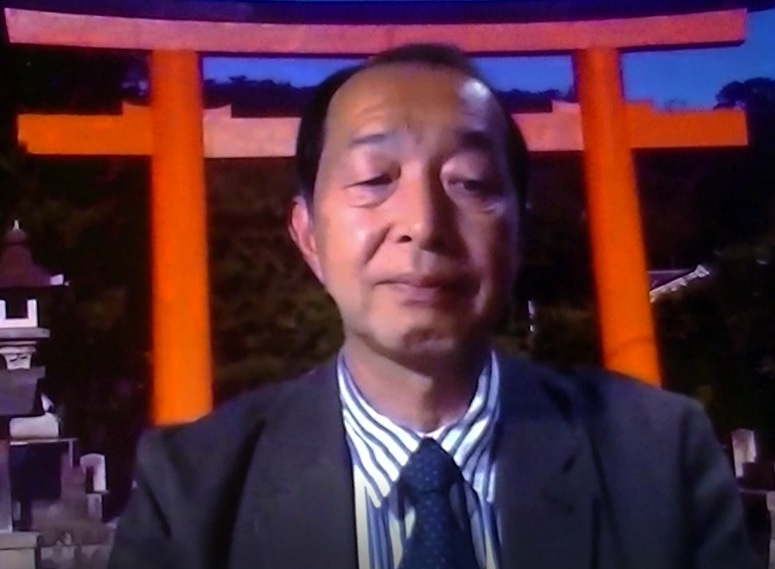Dear Ikuo,
See full document at: https://bit.ly/2X4XVuc.
Please read the report about the suffering and pain of the person dear to me (https://bit.ly/3Aks5bd; blog: https://bit.ly/3AwJj5z) like millions of other people who suffer because they discovered tumors at stage 3 or 4.
We are not on this planet to show our power in suppressing others but to use logical reasoning to understand the laws of nature (science) for improving the quality of life to everyone and to use compassion to alleviate suffering.
I am asking the organizers of the 2021 IEEE-NSS-MIC-RTSD Conference for transparency and scientists to take responsibility for providing logical and scientific answers.
Today I asked the following question to the keynote speaker Prof. Iwao Kanno: “I read with attention and interest your abstract. I perfectly agree with all your statements summarized in “The essence of PET is quantitative measurement of in vivo biology” Could you please look at this document https://bit.ly/2X4XVuc and check if “accurately capture all possible valid signals from the tumor markers at the lowest cost per valid signal captured” is the answer to get what you want?”
The convener, Taiga Yamaya did not read my question he skipped mine and read the one after. However, in the chat window my question was labeled “This question was answered live”, but I never received an answer.
I respectfully request to allow me to present my five papers (see pp. 11-36 at https://bit.ly/3hCdGPw), to include my articles relative to each of the five abstracts in the proceeding of the Conference and let colleagues from the scientific community express their disagreements providing their calculations and scientific reason instead of a “score” or a suppression.
Our disagreements should then be resolved with an experiment that is the judge in science and not the authoritarian position of an influential individual.
I see that among the invited speaker you selected Prof. Iwao Kanno.
I read with attention and interest his abstract that I am including below. I realize that he is in perfect agreement with what I am claiming for more than two decades that he emphasizes in one short sentence “The essence of PET is quantitative measurement of in vivo biology”. My 3D-CBS optimizing quantitative measurements is what he needs that he repeats several times in his abstract. E.g. “The ability to perform reliable quantitative measurements with PET has led to many benefits for neuroscience. .. Quantitative measurement of cerebral blood flow and oxygen metabolism… Quantitative assessment of ischemic level after stroke… quantitative in vivo assay of novel ligands… used to image neurorecepters, inflammation and abnormal proteins …a better way to diagnose neurological disorders… quantitative PET can be applied to any organ in the body”.
It seems to me illogical rejecting my papers right now that after 20 years measurements from third parties prove that I was going in the right direction and they are going back to BGO crystals and to improve sensitivity.
Why for more than 20 years IEEE has pushed spatial resolution, the use of expensive LSO crystals with a shorter decay time to improve again spatial resolution, Paul Lecoq’s Challenge for a 10 picosecond electronics to improve spatial resolution and now the Time of Flight to improve again spatial resolution, while expert users are stressing the importance of “quantitative measurements” that IEEE has been suppressing for 20 years with my 3D-CBS? Could you please explain this and other inconsistencies?
Are there some political-economical reasons to go against the logic, against the science that Iwao Kanno made very clear in his abstract and that I made very clear in my short sentence that no one want to discuss “the 3D-CBS accurately captures all possible valid signals from the tumor markers at the lowest cost per valid signal captured”. This is quantitative measurement and is not focusing building instruments measuring high spatial resolution to the detriment of sensitivity and low-cost.
Your predecessor Rozenfed Anatoli, General Chair at the 2018 Conference in Sydney didn’t see anything wrong for me to present my papers. He authorized me to present them at the last days of the conference so I could include my articles in the proceedings of the Conference. However, he incurred into the obstacle of Tom Lewellen and Ralf Engels who was also Deputy General Chair at that time who didn’t want me to present them.
I went to ask immediately to Tom Lewellen who was standing behind the registration desk at the Conference and he answered in a rude way “Get out of my face”, Ralf Engels was not so rude, he tried to sweeten the pill without giving a real explanation and the fact that in 2020, he deleted several post I wrote on the chat window of the online IEEE-NSS-MIC-RTSD Conference is an indication that there is something unclear that need to be addressed and clarified. Every year now I am receiving some strange reaction also from Craig Woody that I am going to address in a letter to him. All these behaviors, illogical, inconsistent with respect to the profession and ethics of a scientist cannot continue and we should be able to face it and resolve it.
Unfortunately, you are in the position of responsibility to address this. I respectfully ask you to take the same action as you predecessor Rozenfed Anatoli did in allowing me to present my papers and include the articles in the proceedings of the Conference because there are no logical-scientific reasons standing valid from the reviewers for their rejection.
I have answered to Taiga Yamaya proving that reviewer’s rejection claims are illogical while the other two papers submitted to NSS and RTSD didn’t even provide a reason for the rejection. The only claimed a score or referring to the previous years that were rejects with a score or illogical claims that I unveiled logically.
At this point if someone will disagree for my presentations and inclusion of my papers in the Proceedings should come up with a reason complying with logic, science and the ethics of a scientist.
Abstract Keynote speaker Iwao Kanno, Tuesday October 19th, 2021.
Since the mid 1970’s, several groups in the United States, Europe and Asia had built prototype positron emission tomography (PET) devices that were applied to cardiovascular diseases, central nervous system dysfunctions and malignant tumours. These attempts demonstrated that PET images can provide important information to help understand in vivo pathophysiology. The success of these early PET studies spurred further development of new technologies over the next few decades. Recent improvements such as depth-of-interaction (DOI) and time-of-flight (TOF) detectors have enabled both high resolution and high sensitivity. In the future, new ideas such as whole gamma imaging (WGI), which is the simultaneous detection of positron annihilation and single gamma-rays, will open up new horizons in nuclear medicine imaging.
The essence of PET is quantitative measurement of in vivo biology. There are two steps to the quantitative measurement. The first step is to measure a raw image of the tracer concentration with appropriate corrections for unwanted coincidence events (e.g., scatter, random, attenuation) and distortions occurring inside the detector. The second step is to convert the raw concentration image into an image carrying biological information. The conversion is performed on the basis of well-characterized physical and chemical interactions between tracers and tissues. The physical interactions include tracer delivery and washout through diffusion and perfusion of blood flow, while the chemical interactions are the processes by which tracers bind to or are released from receptors in tissues.
The ability to perform reliable quantitative measurements with PET has led to many benefits for neuroscience. For example, quantitative measurement of cerebral glucose metabolism has enabled the spatiotemporal visualisation of neuronal activity. Quantitative measurement of cerebral blood flow and oxygen metabolism during neural stimulation disproved the hypothesis of tight coupling between oxygen supply and demand. Quantitative assessment of ischemic level after stroke provides useful clinical information for reperfusion. In addition, quantitative in vivo assay of novel ligands used to image neurorecepters, inflammation and abnormal proteins (e.g., amyloid, tau) has provided a better way to diagnose neurological disorders. While these examples focus on the brain, quantitative PET can be applied to any organ in the body.




